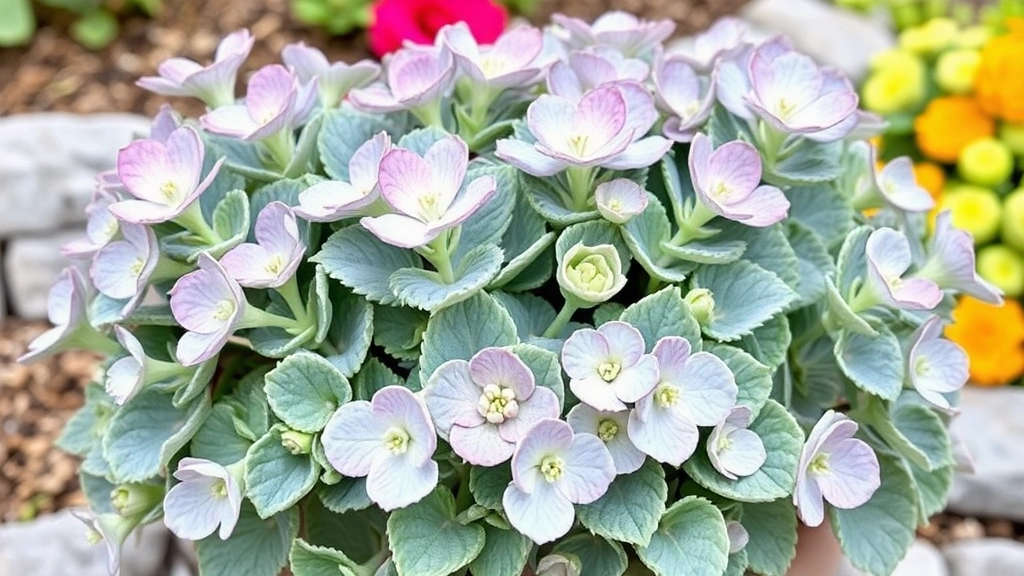Kalanchoe Silver Dollar Care Requirements
When it comes to the Kalanchoe Silver Dollar, understanding its unique care requirements is crucial for thriving growth. This succulent, known for its striking silver leaves, can be a stunning addition to both indoor and outdoor spaces. Let’s dive into the best light conditions to ensure your Kalanchoe Silver Dollar flourishes.
Watering Techniques
Proper watering is essential for the Kalanchoe Silver Dollar, but it’s easy to make mistakes that can lead to issues like root rot. By mastering the right watering techniques and avoiding common pitfalls, you can keep your plant healthy and vibrant. Stay tuned as we explore the ideal soil mix and essential tips for propagation.
Best Light Conditions for Growing Kalanchoe Silver Dollar
When it comes to cultivating Kalanchoe Silver Dollar, one of the most pressing concerns is understanding its light requirements. Are you unsure about how much sunlight your plant really needs?
Kalanchoe Silver Dollar thrives in bright, indirect sunlight.
- Optimal Light: Aim for around 6 hours of bright, indirect light each day. A south-facing window is often ideal.
- Avoid Direct Sunlight: While Kalanchoe enjoys light, direct sunlight can scorch its leaves. If you notice any browning, it might be time to adjust its location.
- Artificial Light: If natural light is limited, consider using grow lights. These can effectively supplement the light your plant receives.
- Signs of Insufficient Light: If your Kalanchoe becomes leggy or its leaves start to drop, it may not be receiving enough light. For more tips on maintaining healthy growth, check out our expert tips for healthy growth.
- Seasonal Adjustments: During winter months, the intensity of sunlight decreases. Be prepared to rotate your plant or move it closer to the light source. For additional care tips during different seasons, visit our essential Kalanchoe care tips for summer success.
Watering Needs and Common Mistakes to Avoid
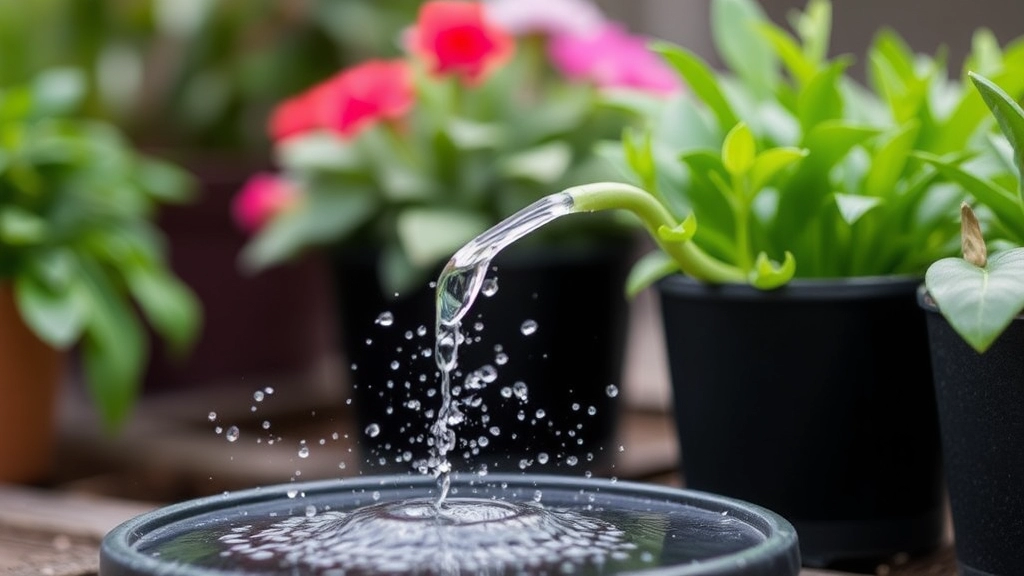
So, you’ve got your Kalanchoe Silver Dollar, and now you’re probably wondering how much water it really needs.
Let’s face it, overwatering is the nemesis of many plant parents.
The Right Amount of Water
Kalanchoes are succulents, which means they store water in their leaves. Here’s how to keep them happy:
- Water only when the soil is dry: Stick your finger about an inch into the soil. If it feels dry, it’s time to water.
- Water deeply: When you do water, make sure to soak the soil thoroughly. Let the excess water drain out.
- Frequency: In the summer, you might need to water every 1-2 weeks, but in winter, cut back to every 3-4 weeks.
Common Mistakes to Avoid
Let’s dive into some classic pitfalls that can lead to sad, droopy leaves:
- Ignoring the season: Your Kalanchoe’s needs change with the seasons. In winter, it’s in a dormant phase and needs less water.
- Using a pot without drainage: This can lead to water pooling at the bottom, which is a recipe for root rot.
- Being too eager: It’s tempting to water frequently, but remember, less is often more with succulents.
Real Talk
I remember when I first got my Kalanchoe. I was so excited that I watered it every other day. Spoiler alert: it didn’t end well!
By keeping an eye on the soil and adjusting my watering routine, I turned things around.
Ideal Soil for Healthy Growth
When it comes to growing Kalanchoe Silver Dollar, the right soil is crucial for ensuring vibrant, healthy plants. You might be wondering, what type of soil is best for these beauties?
Key Soil Characteristics
- Well-draining: Kalanchoe Silver Dollar thrives in soil that allows excess water to escape. This helps prevent root rot, a common issue for succulent lovers.
- Sandy or gritty texture: A mix that includes sand or perlite enhances drainage.
- Slightly acidic to neutral pH: Aim for a pH between 6.0 and 7.0 to keep your plant happy.
Recommended Soil Mix
Creating the perfect soil mix can be straightforward. Here’s a simple recipe:
- 60% potting soil: Use a quality potting mix as your base.
- 30% perlite or coarse sand: This improves drainage significantly.
- 10% compost: Adds essential nutrients without making the soil too heavy.
Store-Bought Options
If DIY isn’t your style, consider these ready-made options:
- Cactus mix: Specifically formulated for succulents and cacti, offering excellent drainage.
- Succulent soil: Designed for a variety of succulent species, ensuring your Kalanchoe Silver Dollar gets what it needs.
Tips for Soil Maintenance
- Check moisture: Always feel the soil before watering. If it’s dry an inch down, it’s time to hydrate.
- Refresh soil every couple of years: This keeps nutrients balanced and prevents compaction.
For more detailed guidance on soil care, check out our best soil for Kalanchoe Blossfeldiana care tips and our guide to caring for Kalanchoe house plants in the UK.
How to Propagate Kalanchoe Silver Dollar Successfully
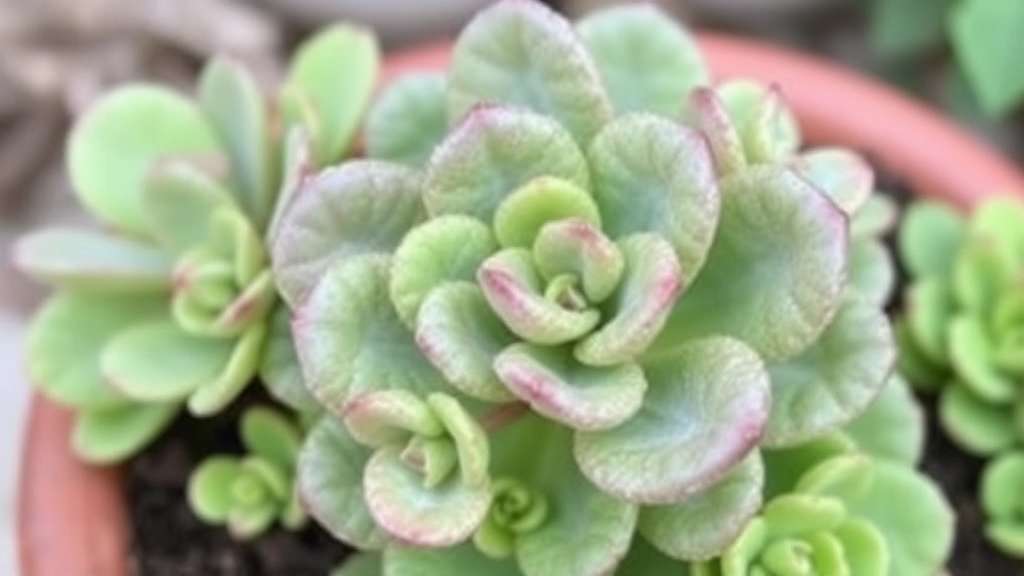
Are you looking to expand your collection of Kalanchoe Silver Dollar? Propagation is a rewarding process, and it’s easier than you might think.
Methods of Propagation
There are two primary methods for propagating Kalanchoe Silver Dollar: leaf cuttings and offsets.
Leaf Cuttings
- Select a Healthy Leaf: Choose a plump, healthy leaf from the parent plant.
- Cut the Leaf: Using clean, sharp scissors, cut the leaf at the base.
- Allow to Callous: Place the leaf on a dry surface for a few days to let the cut end callous over.
- Plant the Leaf: Once calloused, place the leaf in well-draining soil, burying the cut end slightly.
- Water Sparingly: Mist the soil lightly and place it in bright, indirect light.
Offsets
- Locate Offsets: Look for small offsets or pups growing at the base of the parent plant.
- Gently Remove: Carefully detach the offset from the parent plant, ensuring some roots are attached.
- Plant the Offset: Place it in a pot with well-draining soil.
- Water and Care: Water lightly and position in bright, indirect sunlight.
Tips for Successful Propagation
- Timing: Spring is the best season for propagation, as the plant is actively growing.
- Humidity: Maintain humidity around the cuttings by covering them with a plastic bag or a clear container.
- Patience: It can take several weeks for new roots to develop, so don’t rush the process.
By following these simple steps, you can successfully propagate Kalanchoe Silver Dollar and enjoy the beauty of these stunning plants in multiple locations.
Seasonal Care: Adapting to Winter and Summer Conditions
Caring for your Kalanchoe Silver Dollar through the changing seasons is vital for its health and growth. Many plant enthusiasts often worry about how to keep their plants thriving in different weather conditions.
Summer Care
During the summer months, your Kalanchoe Silver Dollar will thrive in bright, indirect sunlight. However, direct afternoon sun can scorch its leaves. Here are some tips for summer care:
- Light: Position your plant near a window with filtered light.
- Watering: Increase watering frequency, ensuring the soil dries out between sessions.
- Humidity: Maintain moderate humidity levels; a dry environment is suitable, but avoid extreme dryness.
- Fertilization: Use a balanced, diluted fertiliser every four to six weeks to support growth.
As temperatures rise, keep an eye out for signs of stress, such as wilting or browning leaves. Adjusting your care routine promptly can help prevent long-term damage.
Winter Care
As winter approaches, your Kalanchoe Silver Dollar requires a different approach. The plant enters a dormant phase, and understanding its needs during this time is crucial.
- Light: Ensure it still receives adequate light, placing it near a south-facing window if possible.
- Watering: Reduce watering to once every two to three weeks, allowing the soil to dry out completely.
- Temperature: Keep your plant in a warm environment, ideally between 15°C and 24°C (60°F to 75°F).
- Humidity: Avoid placing it near heating vents, as dry air can lead to stress.
By adjusting your care routine according to seasonal changes, you can help your Kalanchoe Silver Dollar flourish year-round. For more detailed tips on maintaining your plants during winter, check out our Winter Care Tips for Healthy Kalanchoe Plants. Additionally, if you’re interested in exploring other Kalanchoe varieties, visit our guide on Different Kalanchoe Species for Your Garden.
Common Pests and How to Manage Them

So, you’ve got your Kalanchoe Silver Dollar thriving, but suddenly you notice some unwelcome guests. What do you do?
Pests can be a real headache, but don’t worry—I’ve got your back.
Common Pests to Watch Out For
- Mealybugs
These little white fluff balls love to hide in the leaf joints. They suck the sap from your plant, weakening it over time. - Aphids
Tiny and green (or black), these guys can multiply quickly. They also feed on sap and can leave a sticky residue behind. - Spider Mites
If you see tiny webs, these are likely your culprits. They thrive in dry conditions, so keep an eye out during summer. - Scale Insects
They look like little brown bumps on your leaves. They also suck sap and can be tricky to spot.
How to Manage These Pests
- Regular Inspections
Check your plant weekly for any signs of pests. Catching them early makes a world of difference. - Natural Remedies
Mix a few drops of dish soap with water and spray it on affected areas. Neem oil is another great option; it’s a natural pesticide that’s safe for your plant. - Isolation
If you spot pests, move the affected plant away from others. This helps prevent any spread. - Physical Removal
Use a cotton swab dipped in alcohol to remove mealybugs and scale. A strong blast of water can help dislodge spider mites. - Maintain Healthy Conditions
Keep your Kalanchoe in optimal light and avoid overwatering. Healthy plants are less susceptible to pests.
Prevention is Key
- Quarantine New Plants
Before introducing new plants to your collection, give them a week or two away from the others. This helps ensure they’re pest-free. - Clean Your Space
Dust can attract pests, so keep your plant area tidy. Wipe down leaves occasionally to keep them clean.
Using Kalanchoe Silver Dollar in Garden and Indoor Décor
When it comes to enhancing your living space or garden, Kalanchoe Silver Dollar is a versatile choice that can elevate any setting.
Indoor Décor
Kalanchoe Silver Dollar is not just a plant; it’s a statement piece.
Placement: Position it on a bright windowsill or a stylish shelf.
Containers: Choose decorative pots that complement your interior styleâceramic, terracotta, or even hanging planters work beautifully.
Grouping: Combine it with other succulents for a vibrant display.
The unique, round leaves of Kalanchoe Silver Dollar can add a touch of elegance to any room.
Outdoor Garden
In the garden, Kalanchoe Silver Dollar thrives in sunny spots, making it a perfect addition to rock gardens or succulent arrangements.
Landscaping: Use it as a ground cover or in borders to create a lush, green contrast against gravel or stones.
Containers: Plant it in outdoor pots for a mobile garden feature that can be rearranged as needed.
Companion Plants: Pair it with other drought-resistant plants like sedums or agaves for a cohesive look.
The adaptability of Kalanchoe Silver Dollar allows you to create stunning arrangements, whether indoors or outdoors.
Seasonal Considerations
Remember to consider seasonal changes when placing your Kalanchoe. During winter, it may require extra protection from frost if kept outdoors. For more specific tips, check out our [winter care tips for healthy Kalanchoe plants](https://planthq.org/winter-care-tips-for-healthy-kalanchoe-plants/). Additionally, understanding [how to care for Kalanchoe succulents](https://planthq.org/how-to-care-for-kalanchoe-succulent-ultimate-guide/) can help you maintain its beauty year-round.
How to Prevent Root Rot and Other Diseases
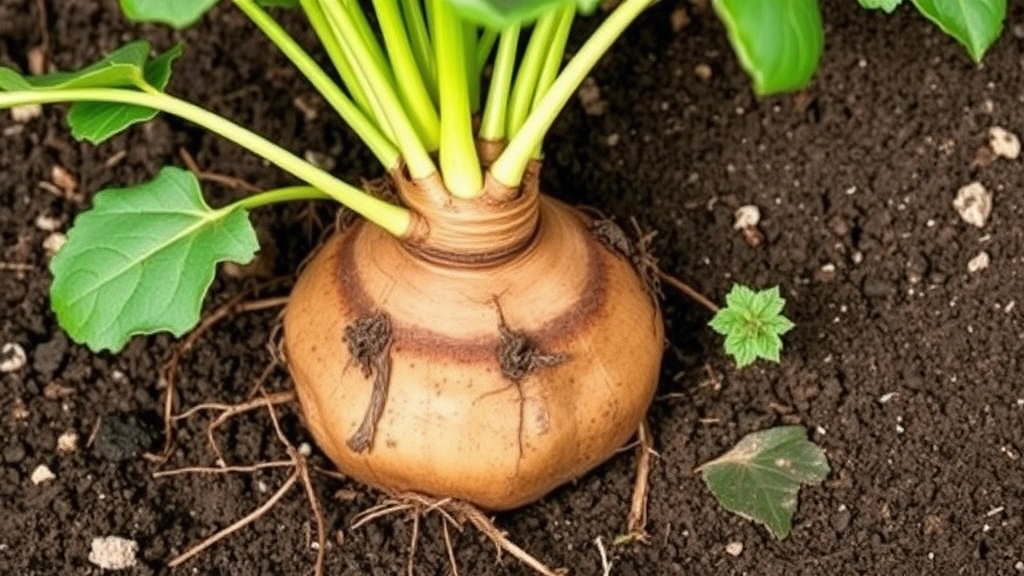
Ever noticed your Kalanchoe Silver Dollar looking a bit sad? It might be suffering from root rot or other sneaky diseases.
Root rot is a common worry for plant lovers, especially with succulents. Here’s how to keep your plant healthy and thriving:
1. Choose the Right Pot
- Drainage is Key: Always use pots with drainage holes. This allows excess water to escape, preventing soggy soil.
- Material Matters: Terracotta pots are great because they absorb moisture, helping to keep roots dry.
2. Water Wisely
- Let It Dry: Always let the soil dry out completely between waterings. Stick your finger in the soil; if it feels dry an inch down, it’s time to water.
- Watering Schedule: During summer, water every 1-2 weeks. In winter, cut back to once a month.
3. Soil Selection
- Well-Draining Mix: Use a cactus or succulent mix. This ensures quick drainage and prevents water from pooling around the roots.
- Add Perlite: Mixing in perlite can enhance drainage even further.
4. Monitor Humidity and Temperature
- Keep It Dry: Kalanchoe prefers low humidity. Avoid placing it in overly humid areas like bathrooms.
- Temperature Check: Ensure your plant is in a warm spot, ideally between 18-24°C. Cold drafts can stress the plant.
5. Regular Checks
- Inspect Roots: If you suspect root rot, gently remove the plant from its pot and check the roots. Healthy roots should be white and firm, while rotten roots look brown and mushy.
- Remove Affected Parts: If you find rot, trim away the affected roots with clean scissors. Repot in fresh soil.
6. Preventative Measures
- Fungicide: Consider using a fungicide if you’ve had issues in the past. It can help protect your plant from future problems.
- Good Airflow: Ensure your plant has good airflow around it. This helps keep mold and mildew at bay.
Tips for Pruning and Maintaining Shape
Pruning is essential for keeping your Kalanchoe Silver Dollar healthy and aesthetically pleasing. Many plant enthusiasts worry about how to prune without harming their beloved succulents.
Fertilization Techniques for Lush Growth
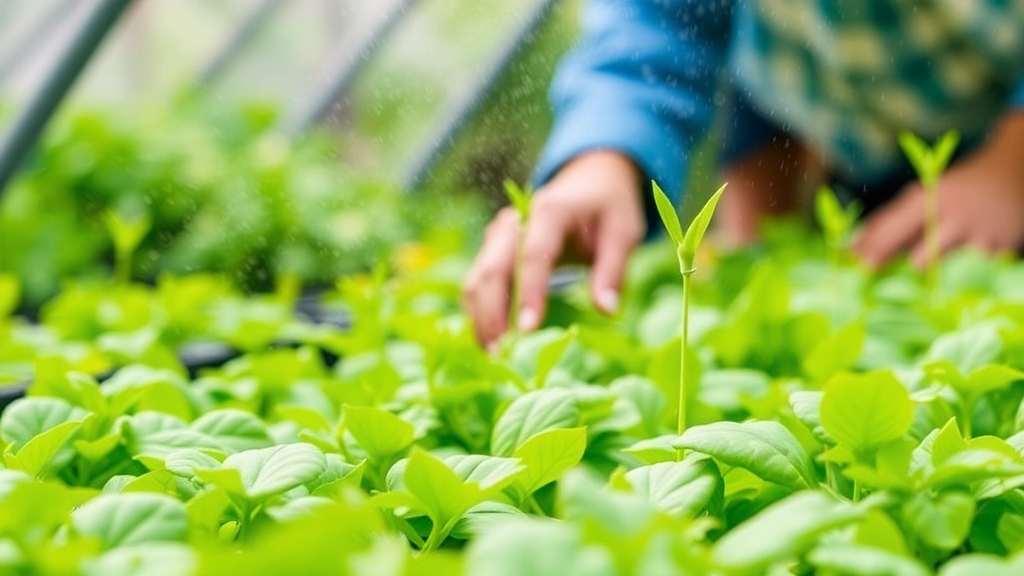
So, you’ve got your Kalanchoe Silver Dollar thriving, but are you giving it the nutrients it craves?
Fertilization can be a game-changer for your plant’s health and vibrancy.
When to Fertilize
- Growing Season: The best time to fertilize is during spring and summer when your plant is actively growing.
- Frequency: Aim for every 4-6 weeks.
What to Use
- Balanced Fertilizer: A balanced, water-soluble fertilizer (like a 10-10-10) works wonders.
- Dilution: Always dilute to half the recommended strength. Too much can burn those lovely leaves.
Tips for Application
- Water First: Give your plant a good drink before you fertilize. This helps prevent root burn.
- Avoid Fertilizing in Winter: Your plant is in dormancy, so skip the feed during this time.
Signs Your Plant Needs More Nutrients
- Pale Leaves: If the leaves are losing their vibrant colour, it could be a sign.
- Stunted Growth: If your plant isn’t growing as expected, it might be time to feed it.
Common Mistakes to Avoid
- Over-fertilizing: This can lead to salt buildup and root issues.
- Ignoring Soil Type: Different soils have different nutrient needs, so adjust accordingly.
Repotting Guide: When and How to Do It
Repotting your Kalanchoe Silver Dollar is crucial for its growth and overall health.
You might wonder, when is the right time to repot?
Generally, the best time to repot is during the spring. This is when your plant is waking up from its dormant phase and ready to grow.
Signs Your Kalanchoe Needs Repotting
- Root Bound: If you notice roots growing out of the drainage holes, it’s time to repot.
- Stunted Growth: A lack of new leaves or flowers can indicate your plant needs more room.
- Soil Degradation: If the soil seems compacted or has lost its nutrients, a fresh potting mix can rejuvenate your plant.
Steps to Repot Your Kalanchoe Silver Dollar
- Choose the Right Pot: Select a pot that is 1-2 inches larger in diameter than the current one. Ensure it has drainage holes.
- Prepare the Soil: Use a well-draining succulent mix or create your own by combining potting soil with sand and perlite.
- Remove the Plant: Gently take the plant out of its current pot. You can tap the sides to loosen the soil.
- Inspect the Roots: Look for any dead or rotting roots and trim them away with clean scissors.
- Place in New Pot: Add a layer of fresh soil to the new pot, position the plant in the centre, and fill in around the sides with more soil.
- Water Sparingly: After repotting, wait a week before watering to allow the roots to settle.
Aftercare
- Light: Keep your repotted Kalanchoe in bright, indirect light for a week to help it adapt.
- Humidity: Maintain a moderate humidity level to prevent stress.
For more detailed care instructions, you can check out our complete guide on Kalanchoe Mother of Thousands care or learn about essential tips for healthy growth of Kalanchoe Panda Plant.
Hardiness Zones and Temperature Requirements for Kalanchoe Silver Dollar
So, you’ve got your Kalanchoe Silver Dollar and you’re wondering how to keep it thriving, right?
Understanding hardiness zones and temperature needs is crucial for this stunning succulent.
Hardiness Zones
Kalanchoe Silver Dollar is best suited for USDA hardiness zones 10 to 12.
This means it can handle mild winters but struggles in frost.
If you live in a colder area, don’t fret! You can still enjoy this beauty indoors.
Temperature Requirements
- Ideal Temperature Range:
- Daytime: 20°C to 25°C (68°F to 77°F)
- Nighttime: 10°C to 15°C (50°F to 59°F)
- Avoid Extreme Temperatures:
- Keep it away from drafts or heat sources.
- Sudden temperature changes can stress the plant.
Tips for Temperature Management
- Indoor Care:
- Place near a sunny window but not in direct scorching sunlight.
- Use a thermometer to monitor indoor temperatures.
- For more detailed care, check out our guide to caring for Kalanchoe house plants.
- Outdoor Care:
- If you’re in a zone above 10, you can keep it outside during warmer months.
- Bring it indoors when temperatures drop below 10°C (50°F).
- For additional tips, read our article on winter care tips for Kalanchoe plants.
FAQs on Kalanchoe Silver Dollar Care
How often should I water my Kalanchoe Silver Dollar?
Kalanchoes are succulents, so they store water in their leaves. Water only when the soil is dry—stick your finger about an inch into the soil. If it feels dry, it’s time to water. In summer, this might be every 1-2 weeks, but in winter, reduce it to every 3-4 weeks.
What are common mistakes to avoid when watering?
Avoid overwatering, especially in winter when the plant is dormant. Using a pot without drainage can lead to root rot, and being too eager to water frequently can harm the plant.
How can I propagate my Kalanchoe Silver Dollar?
You can propagate using leaf cuttings or offsets. For leaf cuttings, select a healthy leaf, let it callous, and then plant it in well-draining soil. For offsets, gently remove them from the parent plant and plant them in a new pot with well-draining soil.
What pests should I watch out for?
Common pests include mealybugs, aphids, spider mites, and scale insects. Regular inspections and natural remedies like neem oil or soapy water can help manage these pests.
How can I prevent root rot?
Use pots with drainage holes and let the soil dry completely between waterings. Choose a well-draining soil mix and avoid placing the plant in overly humid areas.
When and how should I fertilize my Kalanchoe Silver Dollar?
Fertilize during the growing season (spring and summer) every 4-6 weeks using a balanced, water-soluble fertilizer diluted to half strength. Avoid fertilizing in winter when the plant is dormant.
What are signs that my Kalanchoe needs more nutrients?
If the leaves are pale or the plant shows stunted growth, it might need more nutrients. Be cautious not to over-fertilize as this can cause salt buildup and root issues.
How can I manage pests on my Kalanchoe Silver Dollar?
Regularly inspect your plant for pests, use natural remedies like neem oil, and isolate affected plants to prevent the spread. Physical removal with a cotton swab dipped in alcohol can also be effective.
What should I do if I suspect root rot?
Gently remove the plant from its pot and inspect the roots. Healthy roots are white and firm, while rotten roots are brown and mushy. Trim away affected roots with clean scissors and repot in fresh soil.
How can I ensure successful propagation?
Spring is the best time for propagation. Maintain humidity around cuttings and be patient, as it can take several weeks for new roots to develop.
References
-
How to Grow and Care for Kalanchoe Silver Dollar
-
Kalanchoe Plant Care: Everything You Need to Know
-
Kalanchoe Plant Care Guide
